
USB 4
Shifting into
HighER Gear
The New Standard
for Maximum Performance
Since 1996, USB (Universal Serial Bus) has been the universal interface for computer peripherals. Earlier competitors like FireWire and Thunderbolt failed to gain widespread market acceptance, and most have long since disappeared (e.g. ADB, PS/2, SCSI, LVD, IEEE 1284). Others, such as RS-232, survive only in niche industrial applications. With USB4, Thunderbolt 3 is now officially integrated — creating a new, even more powerful standard.
A Story
of Success
With the introduction of USB 1.0 came the revolutionary idea of connecting all peripherals through a single standard port. Features like Plug & Play, hot-plugging, and — for the time — high data rates (12 Mbit/s) quickly established USB as the leading interface.
Subsequent versions massively increased transfer speeds: USB 2.0 reached 480 Mbit/s, USB 3.0 climbed to 5 Gbit/s, USB 3.1 to 10 Gbit/s, and USB 3.2 to 20 Gbit/s. This effectively displaced most alternative interfaces, with only real-time applications remaining as niche exceptions.
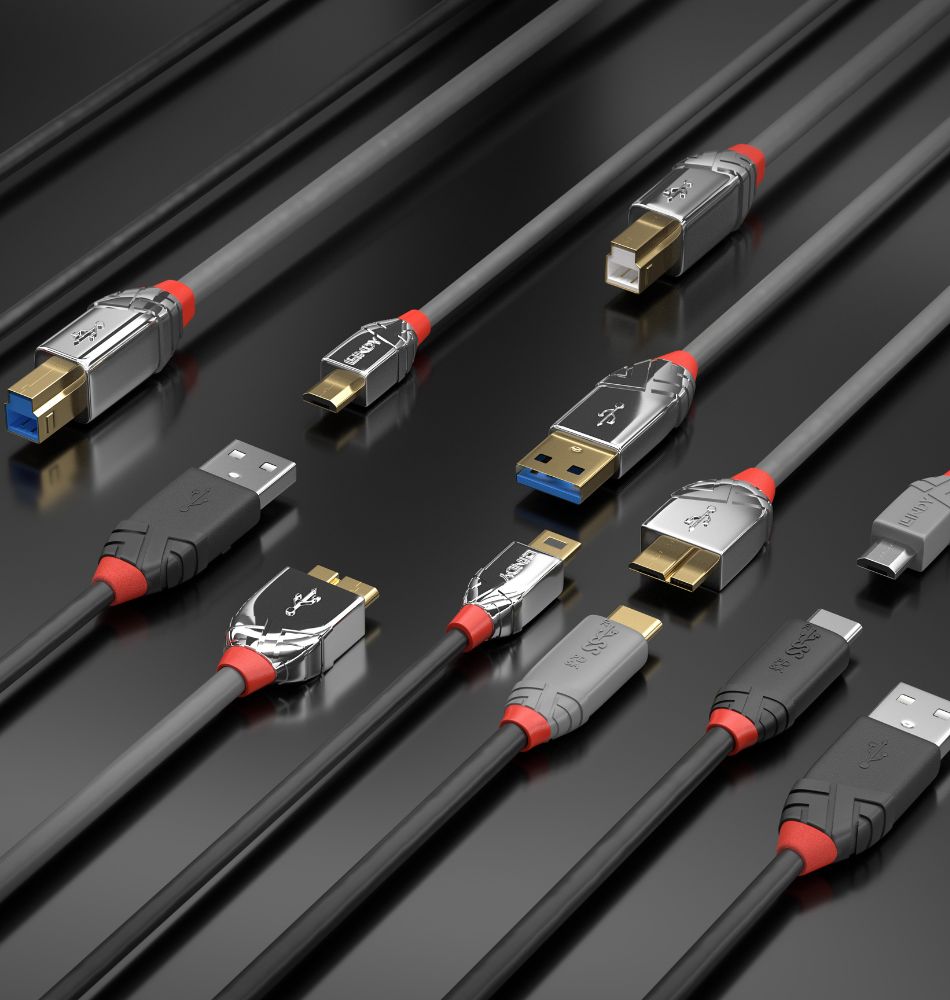
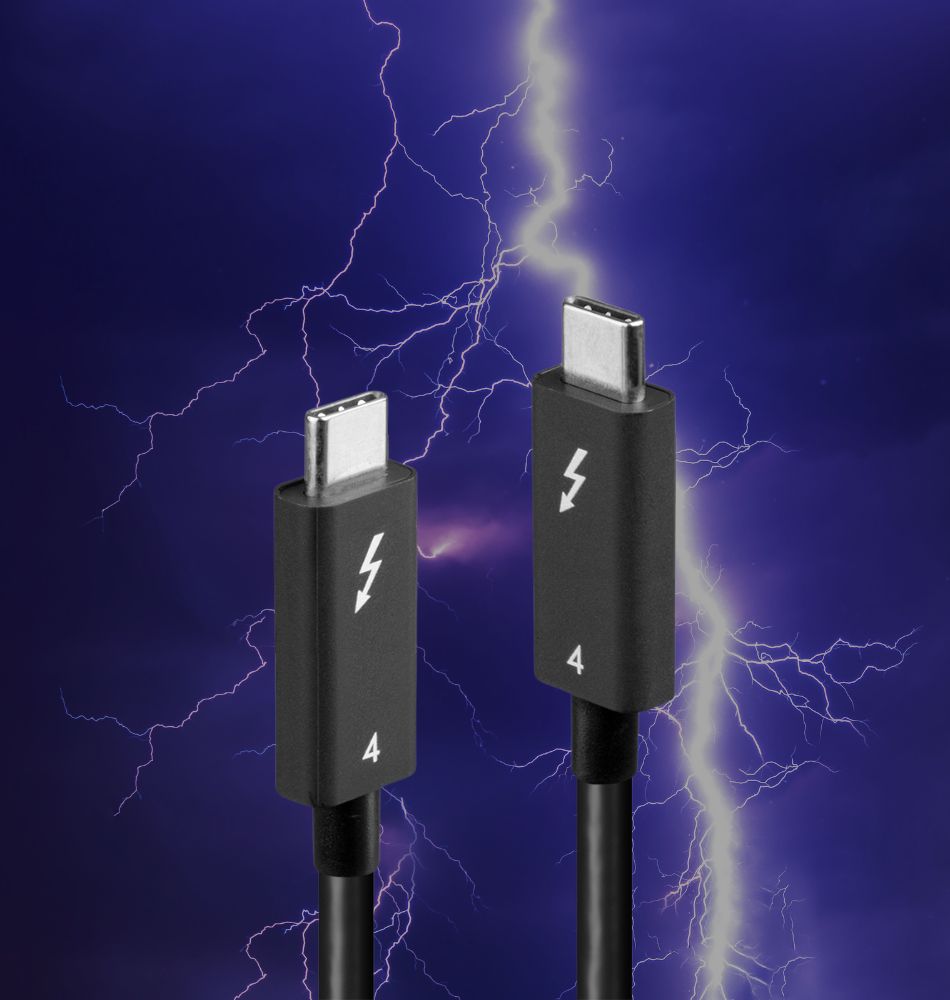
THunderbolt
AND LIGHTNING
Thunderbolt was introduced by Intel and Apple in 2011. Based on DisplayPort and using a bidirectional PCIe data channel, it enabled significantly higher speeds. Thunderbolt 3 marked the debut of the USB-C connector. Initially, with double the speed of USB 3.0, Thunderbolt posed a serious challenge to USB.
However, it ultimately failed to gain wide adoption — largely due to USB’s broader market penetration and the lower production costs of USB hardware. Even the addition of backward compatibility with USB 3.1 wasn’t enough to secure Thunderbolt’s dominance.
TWO
BECOME ONE
USB4 is the first standard to truly combine the strengths of both USB and Thunderbolt. Offering transfer speeds of up to 40 Gbit/s — twice as fast as USB 3.2 — it merges the flexibility of USB hubs with the high performance of Thunderbolt.
Thanks to the integration of PCIe, DisplayPort (Alternate Mode), and USB 2.0, USB4 is exceptionally versatile — ideal for fast data transfers, AV signal transmission, and connecting a wide range of devices.
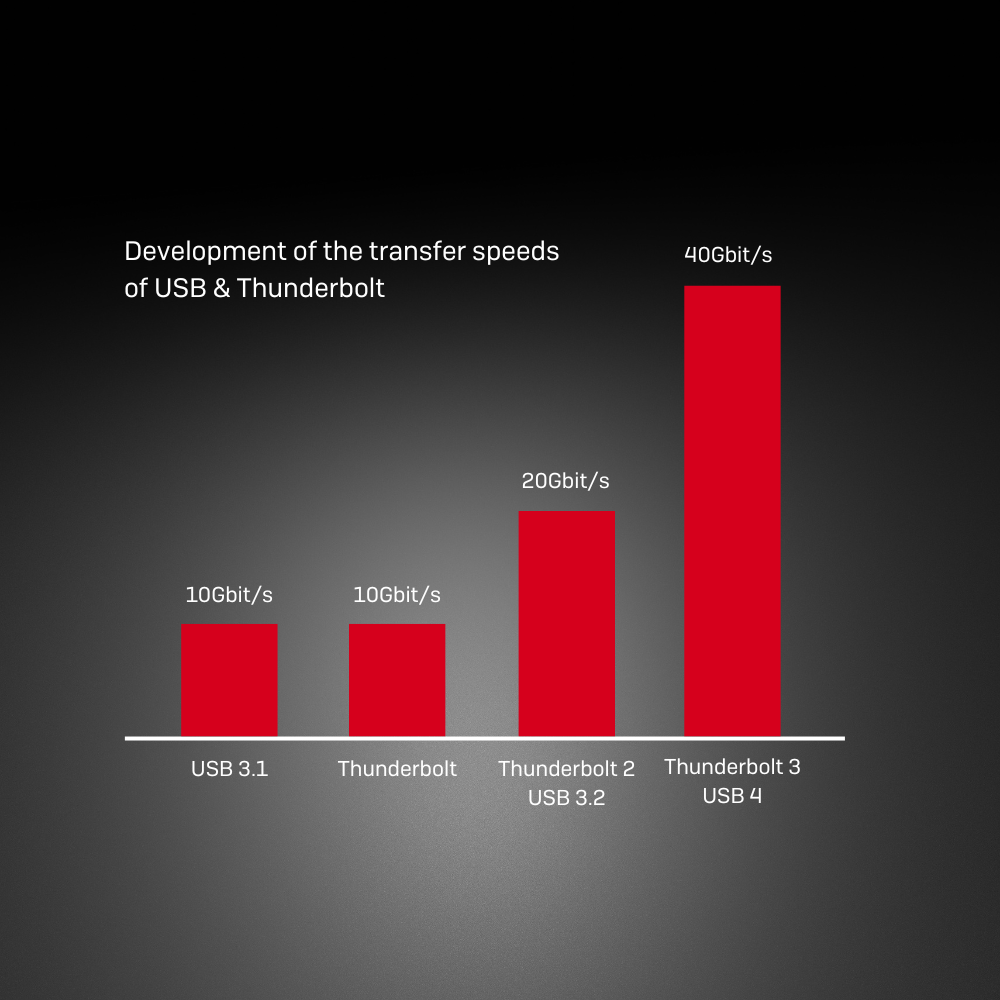
The Whole
and the Sum of Its Parts
USB4 unites multiple protocols, including USB 2.0, Enhanced Superspeed, PCIe, and DisplayPort. This is made possible by a smart internal architecture featuring controllers, switches, and a so-called router that coordinates communication.
The USB-C connector remains central — through DisplayPort Alternate Mode, it enables not only data transfer but also AV transmission, such as to monitors or projectors.
When a new device is connected, supported protocols and speeds are automatically negotiated. While USB4 allows for transfer rates of up to 40 Gbit/s, the specification only guarantees 20 Gbit/s — meaning Thunderbolt 3 devices may operate at reduced speed, depending on the host. It’s worth checking the hardware specs.
A Tower of Babel
Revisited
Since USB 3.1, naming conventions have caused plenty of confusion:
USB 3.0 (5 Gbit/s) became USB 3.1 Gen 1,
USB 3.1 (10 Gbit/s) became USB 3.1 Gen 2.
USB 3.2 introduced even more variants:
USB 3.2 Gen 1 = 5 Gbit/s
USB 3.2 Gen 2 = 10 Gbit/s
USB 3.2 Gen 2×2 = 20 Gbit/s
USB4 continues this logic:
USB4 Gen 2×2 = 20 Gbit/s
USB4 Gen 3×2 = 40 Gbit/s
Whether older versions will be renamed again remains to be seen — but one thing is certain: when buying USB hardware, always pay close attention to the exact labeling.
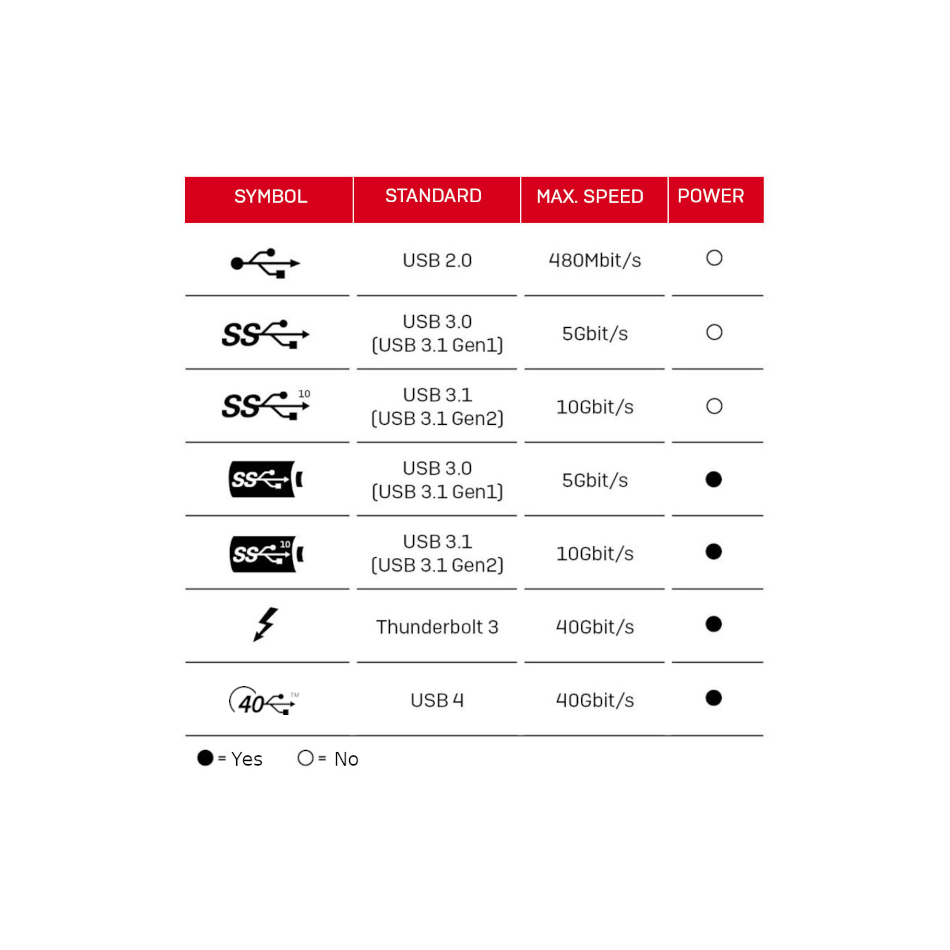
Power
Delivery
USB4 fully adopts the Power Delivery (PD) standard, which manages power distribution between host, hubs, and connected devices — including direction switching and various power profiles. With PD 3.0, up to 20 V / 5 A (100 W) is supported; the latest PD 3.1 standard enables up to 240 W (48 V / 5 A).
Thanks to an integrated E-Marker chip, cables automatically identify the power levels they can support. For example, a laptop can be charged and supplied with data simultaneously via a single USB-C cable — ideal for docking stations and a clean, streamlined setup.
What Does This Mean
for the User?
USB4 simplifies many things: higher bandwidth, unified standards, and a single connector type — USB-C. Users with devices that fully support USB4 functionality — including 40 Gbit/s transfer rates and Power Delivery — benefit from maximum performance with minimal cable clutter. In the past, it was necessary to closely inspect logos and specs; today, USB4 increases compatibility and ease of use.
Still, attention is required:
Not every USB-C port automatically delivers full USB4 performance. When buying devices, it’s important to check for speed (generation labeling) and Power Delivery support.
The new USB4 Version 2.0 already marks the next step in development: offering up to 80 Gbit/s and compatibility with DisplayPort 2.1 via Alternate Mode, it doubles the data rate once again — ideal for high-end peripherals like 8K displays or ultra-fast SSDs. Thanks to backward compatibility, the connector remains the same, but as always: only the right cables and devices can unlock the full potential.
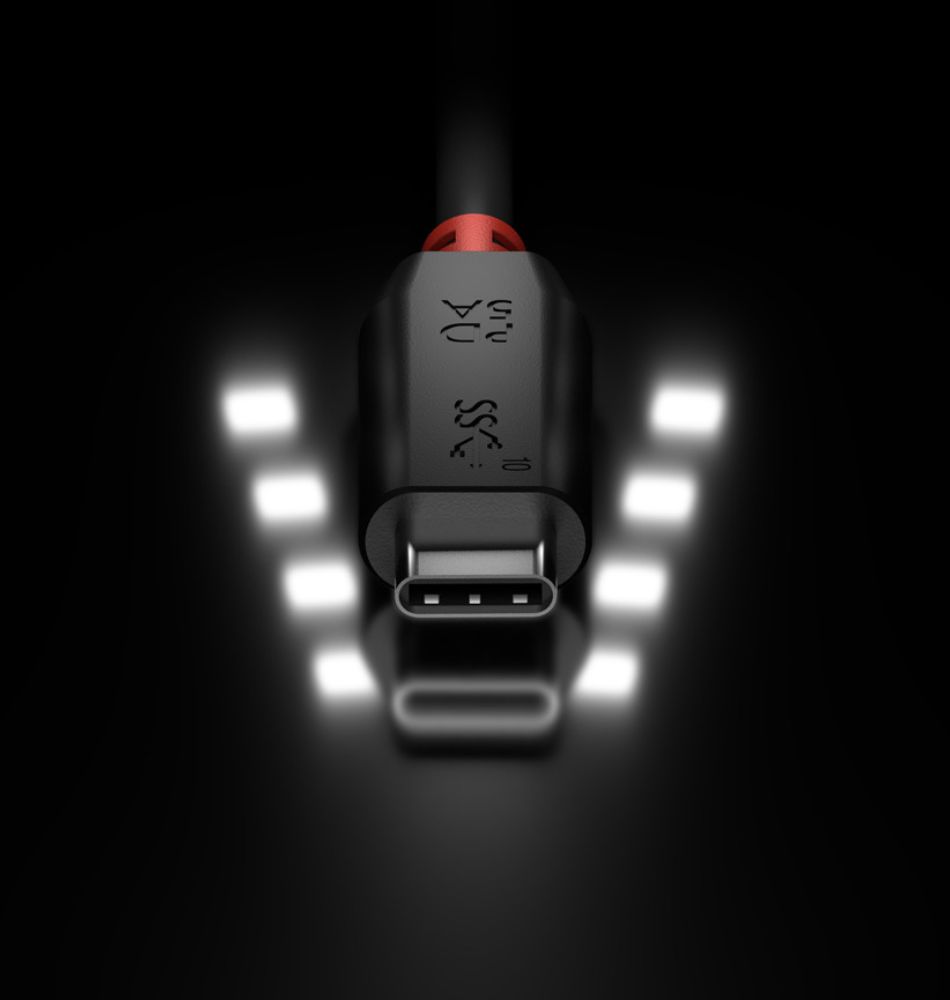
Do you have questions
or need personal advice?
Talk to our experts
